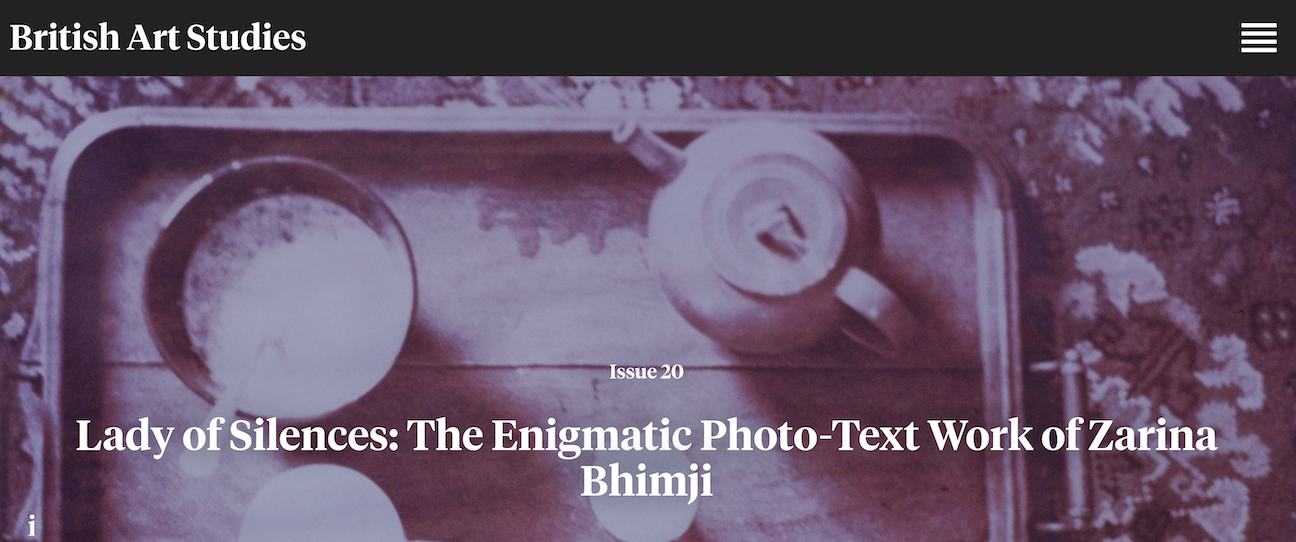"Lady of Silences: The Enigmatic Photo-Text Work of Zarina Bhimji," British Art Studies,
Issue 20 (July 2021)

Click here for full article.
Zarina Bhimji’s work debuted in London in the 1980s, during a period that witnessed important revisionist critiques from the feminist and Black British art movements. Her early photo-text installations, primarily created while she was a student at Goldsmiths' College, address issues surrounding diaspora, the body, and the inhumanity of Britain’s immigration process. While these understudied works are most often framed in relation to postmodernist identity politics, Bhimji’s work avoids overtly political signifiers, instead privileging symbolically charged indices and abstract visual tableaux. As the artist states, “The language I use is related to vulnerability and this is not a culturally specific emotion”. Working toward a more holistic understanding of Bhimji’s art and its context, this article places it in dialogue with that of Mary Kelly, who taught at Goldsmiths throughout the 1980s and whose own production in London bridged the artistic and discursive boundaries that divided the art of the time. In so doing, it positions Bhimji in relation to both surrealist and second-wave feminist artists through her interest in affect, memory, and the symbolic representation of enigmatic childhood and domestic objects as expressions of subjectivity and the unconscious. As such, it demonstrates that postcolonial artists such as Bhimji are central, not peripheral, to the development of British contemporary art history.
Zarina Bhimji’s work debuted in London in the 1980s, during a period that witnessed important revisionist critiques from the feminist and Black British art movements. Her early photo-text installations, primarily created while she was a student at Goldsmiths' College, address issues surrounding diaspora, the body, and the inhumanity of Britain’s immigration process. While these understudied works are most often framed in relation to postmodernist identity politics, Bhimji’s work avoids overtly political signifiers, instead privileging symbolically charged indices and abstract visual tableaux. As the artist states, “The language I use is related to vulnerability and this is not a culturally specific emotion”. Working toward a more holistic understanding of Bhimji’s art and its context, this article places it in dialogue with that of Mary Kelly, who taught at Goldsmiths throughout the 1980s and whose own production in London bridged the artistic and discursive boundaries that divided the art of the time. In so doing, it positions Bhimji in relation to both surrealist and second-wave feminist artists through her interest in affect, memory, and the symbolic representation of enigmatic childhood and domestic objects as expressions of subjectivity and the unconscious. As such, it demonstrates that postcolonial artists such as Bhimji are central, not peripheral, to the development of British contemporary art history.